Photo
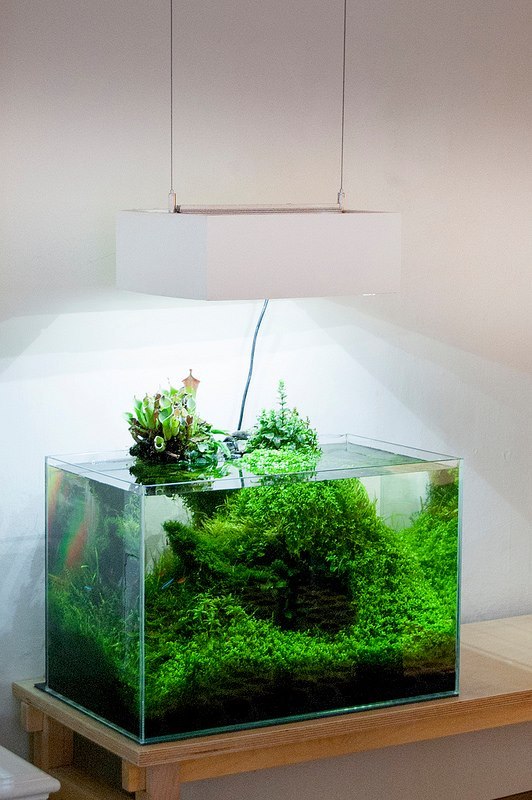

© Mr. Teapot (UKAPS)
Tank: ADA 45P
CO2: Original Up inline Atomiser, Disposable 600g welding cylinders, filter outlet
Light: Grobeam 1500, 100% for 7hrs,
Water changes: 25%(10 litres) twice a week with RO water
Fertilisers: Tropica specialised, 3 pumps with each water change
Filter: Eheim classic 250
Filter media: No sponges, Eheim ceramic tubes and coco pops
Heater: Hydor ETH 200 External
Other: Eheim Skim 350 on timer - every 3hrs for 5mins
40 notes
·
View notes
Photo

How to Care for NPS Coral
Because these corals do not photosynthesize, they need to receive their energy from food. This can be problematic because the corals need to have good water quality while also consuming food constantly.
So what type of foods do you feed and how often? You will want to feed a mixture of food with a range of particle sizes, ranging from tiny phytoplankton to small rotifers and larger calanus copepods & mysis shrimp. Obviously the corals with big mouths want the big food and vice versa.
The corals should be fed every day a few times a day. The amount of food you feed depends on the size of your tank and filtration. A clever way to base your feeding regimen would be to find an existing NPS tank similar to yours, mimic its feeding schedule, and adjust your feedings based on your corals’ response.
Automatic feeders are very popular with NPS tanks. It takes out a considerable amount of the manual labor. These feeders are usually DIY and involve running your plumbing through a refrigerator to keep the food cold. Dry foods can be added with an automatic feeder that is available at your local fish store.
In the wild many corals like Tubastrea are closed during the day; in your tank you are able to enjoy them at all times once we train them by feeding them when the lights are on. Some azoox corals like Dendronepthya are found right on top the reef standing next to Acropora.
Other non- photosynthetic corals, including Distichopora, require darkness; their tissue is susceptible to other organisms growing on them. In my experience, it is much easier to have a non- photosynthetic tank than NPS corals in a mixed reef. You can manipulate the light without it costing other corals.
NPS corals need just as much current as you would put on your SPS tank. They rely on water movement to capture their food; their polyps’ position can manipulate the water around them in order to make the current most effective.
Additionally, you need a superior filtration system. Non- photosynthetic reefers have used refugiums, UV sterilizers, biopellets, and other media. These are used in addition to your standard skimmer, carbon, and water changes.
Non- photosynthetic corals require love, care, and tedious work. It is well worth it because they are mysterious and we need to have a better understanding of them.
10 notes
·
View notes
Photo

© The_Iceman (UKAPS)
#aquarium#fish tank#水族館#freshwater aquarium#freshwater#aquascape#nature aquarium#planted aquarium#planted tank
11 notes
·
View notes
Photo

© Nano Sapiens (nano-reef.com)
Tank Specs
Display: 15"L x 15"W x 13"H - CAD Lights 12 gallon bow-front 'All-in-One'
Biological Filtration: Live Rock and Live Sand only
Mechanical Filtration: None
Chemical Filtration: None
Lighting: (6) Ecoxotic LED Stunner Strips (w/polished reflectors) plus a DIY LED strip
• Circuit #1: (8 hrs): DIY LED strip plus all Stunner Strips (except Royal Blue)
• Circuit #2: (12 hrs): Royal Blue Stunner strip
Water Movement: CAD Lights pump (~250 gph) plus modified Hydor FLO Rotating Water Deflector
Heating: (2) 50W submersible heaters (one set at lower temperature as a backup)
Auto Top Off: (2) large DIY 'Pet Bottle' Auto Top Off units (Reverse Osmosis + 'Kalkwasser')
Maintenance Routine
Water Changes: 5% - 2x/week (10% total/week). 50/50 Micro-Lube Lift & Instant Ocean + RO water.
Detritus Removal: Live Rock 'basting' and gravel vacuuming weekly. Rear chambers vacuumed monthly. Vacuuming under Live Rock every few months.
8 notes
·
View notes
Photo
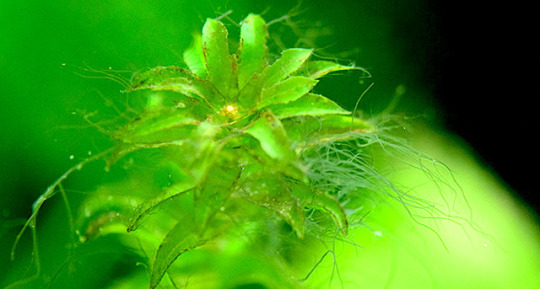
Algae Common Types
Algae is one of the most common problems in a tank, whether it is planted or not. It is normally due to too much of one thing and not enough of the other. For example too much light and not enough co2 and nutrients or not enough light and too many nutrients. Even in a perfectly balanced aquarium it is impossible to stay algae free. Below are the most common types of algae and how to rid yourself of it.
Hair Algae
Very common on plants and rocks. Can be many different colors but is usually green or greyish. They are long thin strands sometimes growing 3-4 inches long. Normally due to overdosing of liquid fertilizers, especially ones high in iron and phosphates.
Getting rid of it
Just reduce the amount and frequency or completely erradicate adding any fertilizers to stop it from growing or add more potassium so the plants will use the phosphates quicker. It is easy to pull off so you can just pull it off until you get rid of it.
Green Spot Algae
Probably the most common algae. Appears as little green spots everywhere: glass, rocks, fish substrate, filters, everywhere. I have found that it occurs where any direct light hits. Also occurs on slow growing plants.
Getting rid of it
Practically impossible to get rid of especially if it is on plants. If it is on the glass however most sucker fish like a pleco will get it off. For plants that keep getting it make sure to move them so no direct sunlight hits them.
Brown Algae
Mainly found on plants and substrate. It is like a brown sludge that coats the plants. It is very easy to rub it off. Usually caused by excess phosphates in the water.
Getting rid of it
One of the easiest ways to get rid of it is buy alot of fast growing plants so that they can outcompete the algae for the nutrients. However you could just buy either a group of SAE (siamese algae eaters) or
otocinclus
(commonly referred to as oto's). They will make a feast out of it. It is best to buy them in groups of 3 or larger.
Red Brush Algae
Occurs as fine threads clumped together. Possibly one of the hardest to get rid of. Tends to favor water with a high carbonate hardness and high PH.
Getting rid of it
The only good fish to get rid of it is the SAE (siamese algae eater). Get a group of them and it should be gone shortly. The common plec has been known to also eat it (very rarely though).
Blue-green algae
Never tackled this type of algae before(luckily) so information has come from
The Tropical Tank
. Blue-green algae (cyanobacteria) appears as a slimy coating in a number of different colours. It can smother plants and may release toxins harmful to fish. It can fix nitrogen and may therefore occur in tanks with zero or very low nitrates (but possibly high levels of other nutrients, particularly phosphate).
Getting rid of it
No known cure. No fish will eat it because it releases toxins. Some people have tried using antibiotics before but make sure you know what you are doing first.
#aquarium#fish tank#algae#aquarium algae#freshwater article#freshtwater#aquascape#nature aquarium#planted aquarium#planted tank
4 notes
·
View notes
Photo

YOUR TANKS: MARTIN LAKIN
The aquarium has actually been running for three years now. But before he decided to set about building the ‘big one’, Martin had a 165cm long x 120cm deep x 60cm high/66 x 48 x 24in set-up in the corner. That would have been large enough for many people, but Martin wanted a tank with more height.
“We did discuss moving house,” he explained. “The front room wasn’t really big enough for all the family at Christmas anyway. But we didn’t really want to move, the location is great. So we decided that it might be an option to extend the front room into the garage.”
On the advice of a structural engineer and a builder, steel columns were built into
the walls of the house and across the ceiling in the front room for reinforcement.
As you might imagine, this was a considerable undertaking.
While the work was underway, Kay did go to Tenerife for three weeks, to visit a sick relative. When she returned, she and their son, James, who was 12 at the time, as planned, stayed with Kay’s mum until the building work was completed. Despite reports to the contrary, she knew exactly what was going on and in fact was overseeing some of the work as Martin was away on business for much of that time, only coming back at weekends.
The builder, Paul Homden, was a longstanding friend of Martin’s and also a very experienced marine fishkeeper. Martin explained: “If it hadn’t been for his valued input I don’t think we would have achieved what we did. I explained what I wanted to do and it was Paul who designed and built the steel frame that the tank sits on, for example.”
A company called Glass Connections (which also built the aquarium at the Natural History Museum), put the tank together in situ, using 19mm thick laminated glass.
All the existing livestock from Martin’s set-up had to be moved into a spare room, housed in the old sump, along with all the essential equipment needed to run it. Unfortunately, there was so much dust about and, with the work taking far longer than estimated, the water conditions deteriorated and some of the hard corals and fish died. “In hindsight, I should have paid someone to look after it all for me whilst I was working abroad and the building work was taking place,” Martin admits.
With the lounge now around 1.5m wider, there’s plenty of room even with the much bigger tank. And while it has an outstanding presence, as you might imagine, it doesn’t overpower the room.
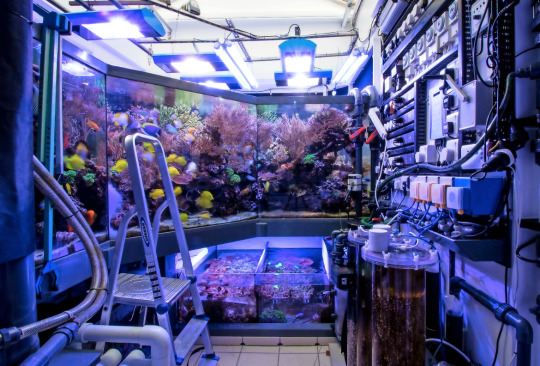

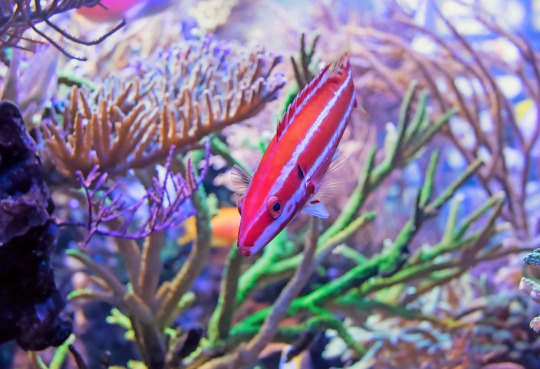
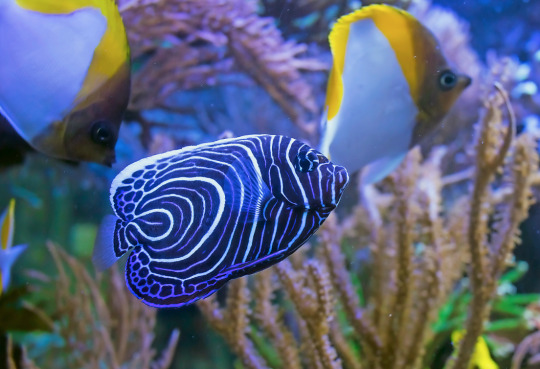
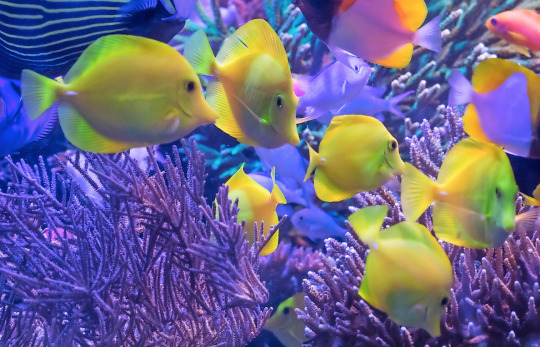
#aquarium#fish tank#saltwater#nano reef#reef tank#reef aquarium#pico reef#coral reef#coral frag#coral#sps#lps
7 notes
·
View notes
Photo
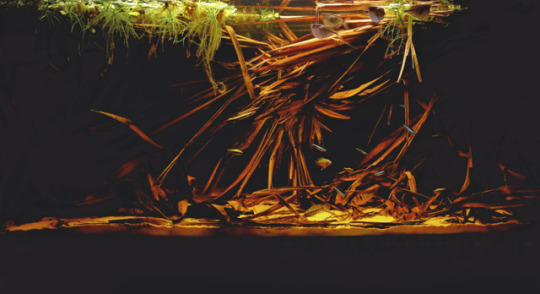
YOUR TANKS: TAI STREITMAN
Source: practicalfishkeeping.co.uk
An aquarist who travels the world and builds tanks based on where he’s been is inspiring. What’s even better is when he shares those tanks with the rest of us...
WORDS: TAI STREITMAN. PHOTOGRAPHY: GEORGE FARMER
Looking around at the hobby today, I feel it’s fair to say that for many fishkeepers, the days of plain aquarium gravel, a few plastic plants and a novelty treasure chest air-stone have been left behind. High tech aquascapes, biotopes and complex reef systems have all entered the hobby and changed our perspectives on what is feasible, what is available and what is ethical.
There are those who will never relinquish plastic plants, shipwrecks and a diverse community, and that’s fine — each to their own. As long as fish are healthy and quality of life is maintained, people can put whatever they like in their tanks.
My own feeling is that for a little effort, we can create displays that not only prioritise the wellbeing of our fish, but also look beautiful and natural. Looking online or at some of the incredible aquascapes that appear in this magazine can be daunting, but a bit of research and patience can provide even the beginner with an engaging and successful set-up.
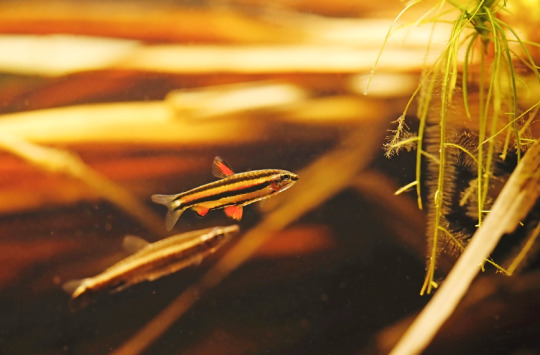
Nannostomus marginatus.
Forest shadows
I’m a huge fan of blackwater set-ups. If it looks like tea, I’m in. These set-ups aren’t hard to create, although maintaining water quality and stability are important. Using lots of wood and leaf litter produces tannins that stain the water and lower the pH. Also, believe it or not, they’ll bring out the colours of many species more spectacularly than crystal clear water.
Many of our popular characins, dwarf cichlids, rasbora and gourami species will all thrive in blackwater set-ups that mimic their natural environments. I was lucky enough to explore blackwater streams in Colombia and Peru and they have inspired me to create a small blackwater community with species found in the Amazon basin.
I have used a 90cm/36in, 100 l/22 gal tank and Catappa leaves (easily bought online) and a stash of dried finger palm fronds that actually come from the gorilla enclosure at London Zoo!
You can just as easily use beech or oak leaves and it’s worth collecting a few bags in the autumn and storing them in a dry space for use as and when you need them. Amazon frogbit, Limnobium laevigatum, and Salvinia natans provide cover for the fish and with those aerial roots they suck up spare nutrients.
I wanted to have activity at all levels and my choice of fish reflects this. At the top, Giant hatchetfish, Gasteropelecus sternicla, and Hockey stick pencilfish, Nannostomus eques, cruise through the floating plants. Slightly lower down, a troupe of Dwarf pencilfish, Nannostomus marginatus, flit through the palm fronds while Green neons, Paracheirodon simulans, emerge from the shadows to show off their brilliant iridescence before diving away again. A few juvenile Gold tetras, Hemigrammus rodwayi, add contrast to the Green neons in colour and body shape.
At lower levels, charismatic Apistogramma viejita and Rams, Mikrogeophagus ramirezi, scuffle and argue over small territories and favourite display spots. Keeping several females to each male reduces tension but providing plenty of cover is the best way of ensuring that no one fish gets hounded by an opponent or over-amorous male.
Finally, on the bottom the classic Panda corys, Corydoras panda, shuffle and nuzzle their way through the sand and leaf littler, hunting for morsels and providing endless movement.
This was a very simple set-up; two 24W T5 bulbs, a 150W heater, dried leaves, play sand and floating plants was no great investment. The only thing you should not cut corners on is filtration and this tank uses an Aquamanta 300 EFX filter with a flow rate of 1100 lph, although this is turned down to mimic the flow of the natural habitat.
This is one of my favourite set-ups, where the colours and characters of the fish draw you in and the simplicity of the set-up makes running the tank very straightforward.
Blackwater tank factfile
Fish:
Gasteropelecus sternicla
Nannostomus eques
Nannostomus marginatus
Paracheirodon simulans
Hemigrammus rodwayi
Apistogramma viejita
Mikrogeophagus ramirezi
Corydoras panda
Plants:
Limnobium laevigatum
Salvinia natans
Water parameters:
Temperature: 26°C/79°F.
pH: 6.5.
Hardness: 18–215 ppm.
Equipment:
2 x 24W T5 bulbs (running six hours a day).
150W heater.
Aquamanta EFX 300 filter.
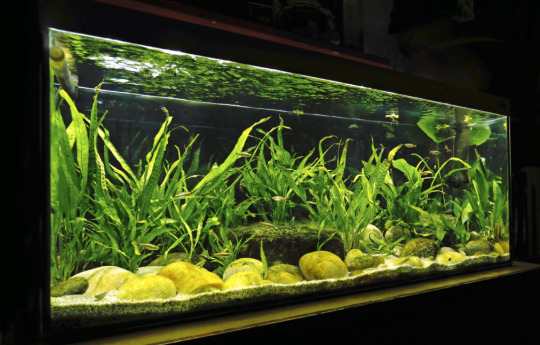
This tank was set up for Stiphodon gobies after observing them in their natural habitat in the Philippines.
Cool rapids
Aquarium species and their needs are nothing if not diverse and staying with the theme of simple, easy set-ups catering to the needs of engaging and charismatic species, I have also set up a hillstream tank for Stiphodon atropurpureus.
I got to see Stiphodon gobies in the wild in the Philippines and vowed to keep them at home. These little gems are often seen in shops, slowly starving to death in tanks devoid of the auchwuchs they need to graze on, with little flow and kept much warmer than their natural waters. As these fish are always wild caught, providing them with a close replica of their habitat is vital for success. Cool (20–24°C/68–75°F) oxygen rich water, excellent filtration and plenty of algae and hidey holes will see these little characters thrive. Unlike many gobies, my
S. atropurpureus are not aggressively territorial. There may be the odd spat, but again, providing several females for each male and ensuring that each male has at least one big rock he can perch on will generate harmony. Watching them graze over boulders in a line abreast is very satisfying!

Stiphodon gobies prefer the cooler, oxygenated water this set-up provides.
Although plants are not a feature of their natural habitat, I have included Java fern, Microsorum pteropus, and Anubias, both of which will tolerate the flow and cooler temperatures, so as to add colour and cover. Algae gathers on the leaves of these slow-growing species and the gobies will tear chunks off and zip over the plants, happily grazing. The main rocks in this tank were allowed to soak in a tub outside for weeks to build up enough algae to support the gobies when they were added and this will quickly spread to newly added pebbles.

White Clouds add colour and movement at midwater level.
For dither fish I have added White Cloud Mountain minnows, Tanichthys albonubes, a truly underrated little fish which, when kept in cool water with plenty of flow and oxygen, will reward you with gleaming red and gold colours, and stunning displays by the males.
While Stiphodon aren’t the cheapest of fish, the rest of this set-up can be created affordably. An Aquamanta EFX 400 filter provides flow and a high turnover in this 100 l/22 gal tank. No heater is used but to produce plenty of algae, I’ve added cool-running TMC Grobeams, (these could be replaced with simple T5 bulbs). A fine substrate that isn’t light enough to be moved about by the flow allows the gobies to dig. I’ve opted for standard, fine gravel.
Hillstream tank
Fish:
Stiphodon atropurpureus
Tanichthys albonubes
Plants:
Anubias nana
Anubias congensis
Anubias hastifolia
Microsorum pteropus
Water parameters:
Temperature: 22°C/72°F.
pH: 7.0.
Hardness: 18–215 ppm.
Equipment:
2 x TMC Grobeam LEDs (ten hours a day).
Aquamanta EFX 400 filter.

This jungly set-up was the result of a trip to wetlands in Brazil.
Going green
As an aquatic plant enthusiast, I have to have at least one planted aquarium and so my main tank, a 240 l/ 53 gal set-up, is stuffed with greens. I combined plants and species from several habitats from the Pantanal wetlands of Brazil to produce a busy but not overbearing display with subtle fish colours, plenty of movement and some cryptic yet charismatic species.
I enjoy creating layouts with different plant heights and textures and then letting them run riot. A jungly tank, where you have to work to spot some of its inhabitants will always hold more interest for me than a display where everything is on show, straight away.
Again, this is not a particularly difficult display. CO2 injection, a daily and weekly fertiliser regime for the plants, twice-weekly water changes and solid filtration (in the form of a Fluval FX6) does not entail too much effort, but the rewards are considerable.
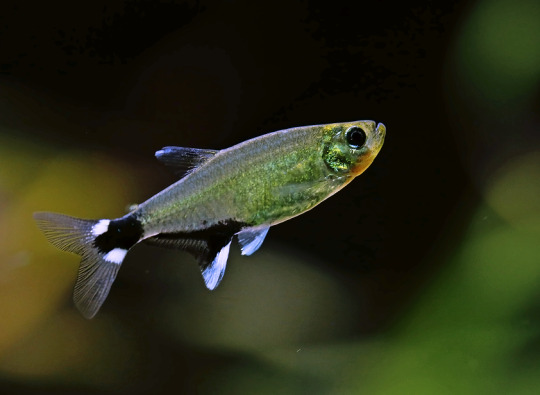
Dawn tetra, Aphyocharax nattereri.
I believe in trying species that are either considered common or dull, and working to get the best out of them by creating an ideal environment. In this case, I have chosen the Dawn tetra, Aphyocharax nattereri. Famed for being a fin nipper, this behaviour (as in many species) does not become apparent when they are kept in sufficient numbers. They will spend their time chasing each other, with no one fish receiving too much aggression, and race about the tank in their battles to establish hierarchy. You will likely never notice this in shops, but the males develop a soft red on the bellies and anal fin and when well kept, they develop a lovely green gold colour on the body.
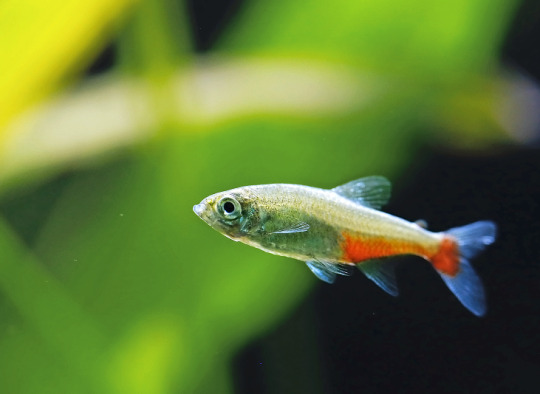
Aphyocharax rathbuni.
A group of Serpae tetra, Hyphessobrycon eques, provides riotous colour to contrast with the subtle tones of the other species and the green backdrop. Rathbun tetras, Aphyocharax rathbuni, dart between the tall leaves and hover like aquatic hummingbirds, eyeing up the situation before zooming to another part of the tank. A gang of Red-breasted acara, Laetacara dorsigera, stalk the long grass, their purple flanks gleaming through the blades of Echinodorus.
Several shy Sheepshead acara, Laetacara curviceps, watch from the shadows and then emerge slowly into the light, their shimmering blue scales, erratic movements and suspicious investigation of everything making me smile. Isn’t that what it is all about at the end of the day? Making your fish happy, so they make you happy?

Laetacara curviceps.
Planted tank
Fish:
Aphyocharax nattereri
Hyphessobrycon eques
Aphyocharax rathbuni
Laetacara dorsigera
Laetacara curviceps
Plants:
Echinodorus uruguayensis
Echinodorus tenellus
Helanthium bolivianum ‘Latifolius’
Eleocharis gigantea
Heteranthera zosterifolia
Myriophyllum tuberculatum
Persicaria sp. ’Sao Paulo’
Water parameters:
Temperature: 23°C/73°F.
pH: 6.5.
Hardness: 18–215 ppm.
Equipment:
2 x 39W T5 bulbs (running eight hours a day)
250W heater
Fluval FX6 filter
CO2 solenoid and gauge with 8kg bottle (two bubbles per second).
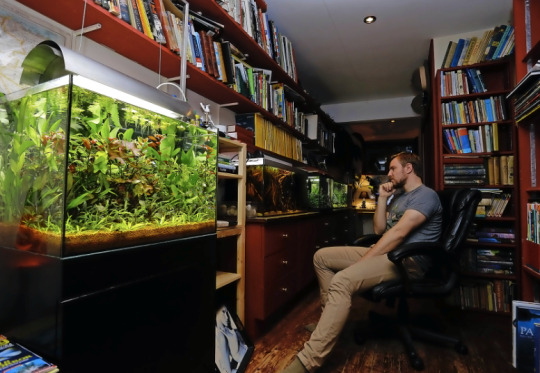
Tai at home with his tanks, many of which have been inspired by his trips around the world.
#aquarium#freshwater#freshwater aquarium#aquascape#nature aquarium#planted aquarium#planted tank#biotope
6 notes
·
View notes
Photo

© 4x5 (nano-reef.com)
Read more at teruyalab.com
Tank Specs
Display: Custom 700mm x 700mm x 300mm (27.5 x 27.5 x 11.8 inches)
Sump: Custom 600mm x 600mm x 400mm (23.5 x 23.5 x 15.75 inches)
Lighting: ATI Sunpower T5/LED Hybrid by Nanobox
Flow: 2 x Vortech MP10wES with Battery Backup
Return: Halea 1750/H return pump
Skimmer: Reef Octopus Diablo 160XS
Media: Seachem Matrix Carbon run passively.
Dosing: Seachem Reef Fusion 2 Part via Marine Magic Doser
ATO: TMC V2
Heater: 1 x 250w Eheim Jager
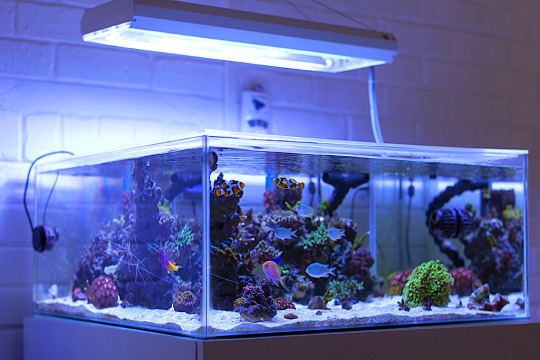

Maintenance Routine
• Weekly 25 liter water change.
• Clean glass every 2 days.
• Use turkey baster to clean rocks twice a week or whenever I feel like it.
• 2ml Coral Snow + 1 drop ZEOBak twice a week.
• Aquavitro Fuel – Occasionally.
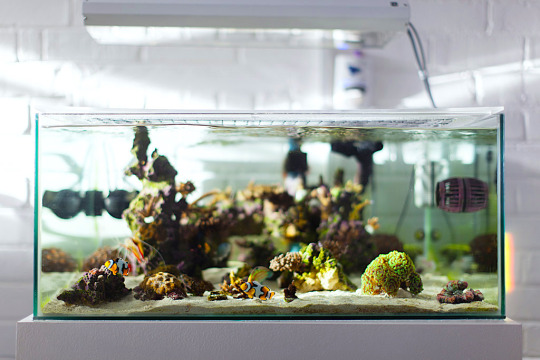
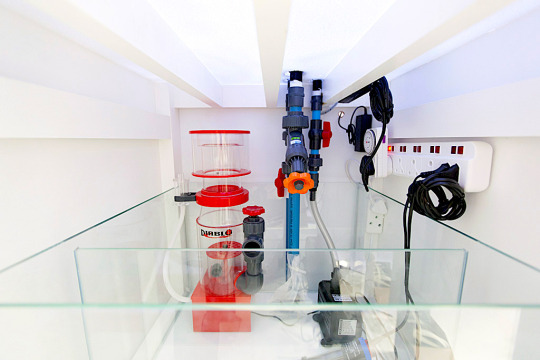
7 notes
·
View notes
Photo

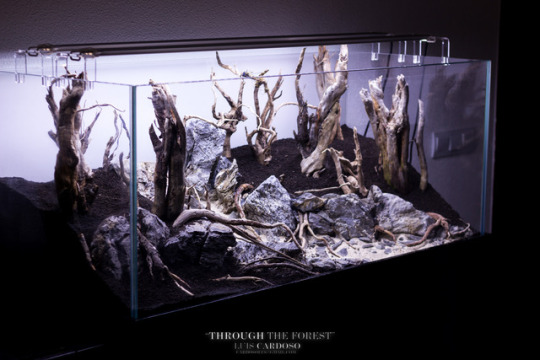

Tank: Aquaeden WaterCube 120x50x50
Cabinet: By Aquaeden 120x50x80
Lights: 2x Zetlight Lancia ZP4000 - 1200 Plant Edition
Filtration: Eheim Pro 3 1200XLT
Other: Twinstar Nano + / Co2 Pressurarizado com difusor Do!Aqua Music Glass 50mm
Hardscape: ADA Redmoor Branch / Some roots gathered on nature / Seiryu Stone 40kg
Substrate: Mbreda Amazônia + ADA Aquasoil Amazonia (old)
Fertilization: EI
Plants:
- Staurogyne Repens
- Monte Carlo
- Hygrophila Pinnatifida
- Rotala Rotundifolia
- Weeping Moss
- Bolbitis Heudelotii
- Bucephalandra Black Mist
- Bucephalandra Brownie
- Bucephalandra Catherine
- Cryptocoryne beckettii 'Petchii
© Luís Cardoso
Read more at teruyalab.com
4 notes
·
View notes
Photo

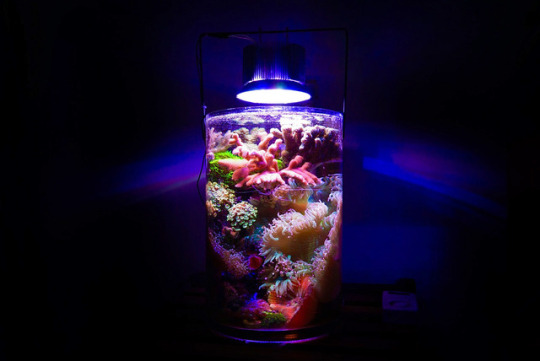


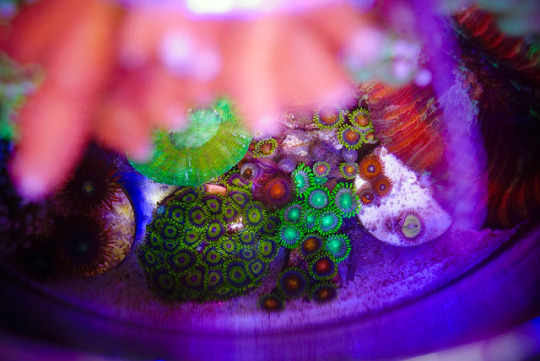
Display: Glass cylinder vase, approximately 2 gallons, 11" high x 7.5" diameter.
Lighting: DIY LED Fixture with 3 blue, 2 white, and 1 purple diode, 3W each.
Heater: UP 50 Watt
Circulation & Filtration: EHEIM classic 150
Aeration: 3 Watt air pump.
Skimmer: None
Filter Media: EHEIM SUBSTRATpro
Dosing: None
© Pongpit at nano-reef.com
Read more at teruyalab.com
#aquarium#fish tank#saltwater#nano reef#pico reef#reef tank#reef aquarium#saltwater tank#saltwater aquarium
22 notes
·
View notes
Photo
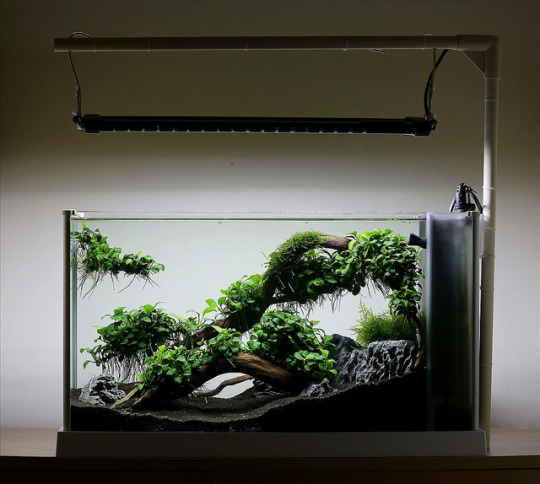
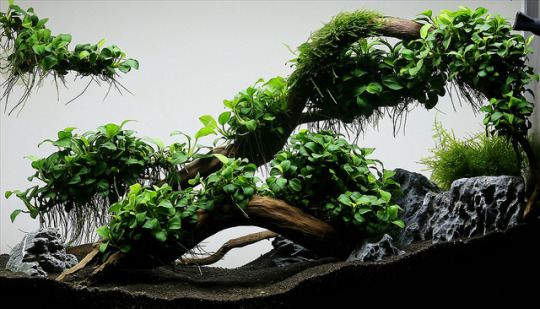

Tank: Fluval spec 19
Capacity: 19L
Light: Beamswork Hi-Lumen 1000 LED
Light suspension: DIY
Filtration: Fluval spec 19
Heating: 50w
Soil system:
ADA Power sand
ADA Bacter100
ADA Claer Super
ADA Amazonia
ADA Amazonia powder
Seiruy stone: 1Kg
Roots: Azaela
Plants:
Anubias petite
Peacock moss
Water: RO+JBL Aquadur
Fertilisation: Tropica Specialized, EL Potassium
Co2: Liquid carbon
Live stock: Shrimp
© Lauris Karpovs
Read more at teruyalab.com
youtube
46 notes
·
View notes
Photo

How Can I Stop This "Weed" From Taking Over my Reef Tank?
I have a real problem with pulsing Xenia in my tank. I constantly cut it off and ensure everything comes out but it just grows back. It is now starting to affect my SPS corals and clam. Is there a way to get rid of it that won’t involve stripping the tank down? The only thing it won’t grow up against is my Palythoa colony which seems to burn it back. Help!
LUKE, PORTSMOUTH
Pulsing Xenia can look fabulous, but at the same time it can become invasive, attaining weed-like status in many aquariums. It can shade out other sessile invertebrates and outcompete them for space, but studies have shown that xeniids also emit toxic (‘allelopathic’) chemicals which can harm neighbouring corals. Unfortunately, controlling it can be difficult, although it’s possible to confine it to specific areas of the aquarium (at least to a certain extent) by keeping it on isolated rocks away from other invertebrates. This can help curtail its spread throughout the aquarium. Biological control is hit-or-miss at best, and chemical control can work, but it runs the risk of polluting the aquarium as the Xenia dies off, so physical control is the best approach.
As far as removing the existing Xenia, bear in mind that they’re very good at regenerating from even the tiniest fragment left behind. Therefore, simply cutting them off at the base, or even scrubbing them off the rocks can leave tissue behind, allowing them to regrow.
Where possible and practical, look into completely removing the worst-affected rocks and trade these with other aquarists or your local fish shop (someone will actually want them!).
Otherwise, you’ll need to temporarily remove the rocks and physically remove the entire colony before replacing them. This means either chiselling or snipping away at the rock on which the Xenia is growing with a suitable tool (avoid getting any oil in the water from the tools, and wash them straight after use). On rocks that you can’t lift out of the water, this will be trickier, but it can still be done. Xenia that’s growing on the glass can be simply scraped off with a credit card or metal blade, but do this whilst syphoning at the same time to remove the animal.
A complementary approach is to try and limit nutrients. Xenia don’t actually feed (they don’t have a functional gut or mouthparts), but they can take up nutrients directly from the water, so elevated phosphate and nitrate could encourage their growth. Having said that, some folks with pristine aquarium water still find Xenia a problem, but this is certainly worth looking into all the same. Ensure mechanical and chemical filtration (activated carbon and phosphate-adsorbing media) are working effectively, and the protein skimmer is suitably adjusted to pull out maximum organics from the water.
DAVE WOLFENDEN
Source: practicalfishkeeping.co.uk
Read more at teruyalab.com
#aquarium#fish tank#saltwater#nano reef#pico reef#Xenia#Xenia coral#reef tank#reef aquarium#saltwater tank#saltwater aquarium#saltwater article
0 notes
Photo

Planted Tank Size:60x40x40 cm
Aquarium Volume:90L
Aquascape Background: clear
Aquarium Lighting:Radion XR15fw
Aquarium Filtration:JBL 1501
Aquarium Substrate:ADA Amazonia
Aquarium CO2:Injected
Planted Tank Fertilization:Ttropica Specialized, EL Potassium, EL Ferro
Aquarium Plants:Anubias nana, Monte Carlo,
Aquascape Hardscape:Stones: Seiryu stone (mini landscape rock) Wood: Azaleas root
Aquarium Fish/Animals:Mikrogeophagus ramirezi (German blue Ram) Carinotetraodon travancoricus (Dwarf puffer) Hyphessobrycon amandae (Ember tetra) Caridina multidentata (Amano shrimp) Clithon corona (Horned nerite snails)
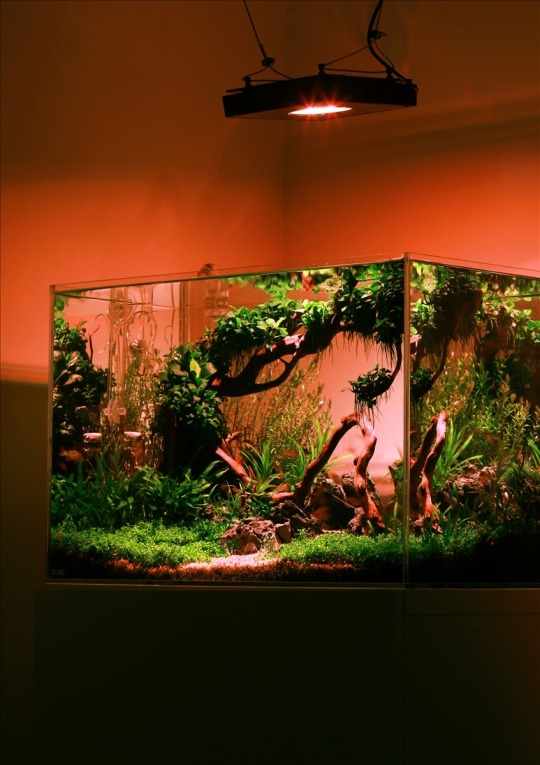


Planted Tank "Coisia Vallem" by Lauris Karpovs
(LxHxW) 60x40x40cm Light: Radion XR15fw Filter: JBL e1501 Heater: external CO2: injected Other: Twinstar Nano
Substrate: ADA amazonia + some cheap natural gravel (used for path) Stones: Seiryu stone (mini landscape rock) Wood: Azaleas root
Plants: Anubias nana, Anubias pinto, Micranthemum (Monte Carlo), Heteranthera zosterifolia (stargrass), Hygrophila araguaia, Rotala rotundifolia and few others
Live stock: 2 x Mikrogeophagus ramirezi (German blue Ram) 1 x Carinotetraodon travancoricus (Dwarf puffer) 18 x Hyphessobrycon amandae (Ember tetra) 5 x Caridina multidentata (Amano shrimp) 13 x Clithon corona (Horned nerite snails)
Date project launched (flooded) - 30.10.2014
© Lauris Karpovs
Read more at teruyalab.com
#aquarium#fish tank#freshwater aquarium#planted tank#aquascape#nature aquarium#planted aquarium#freshwater
16 notes
·
View notes
Photo
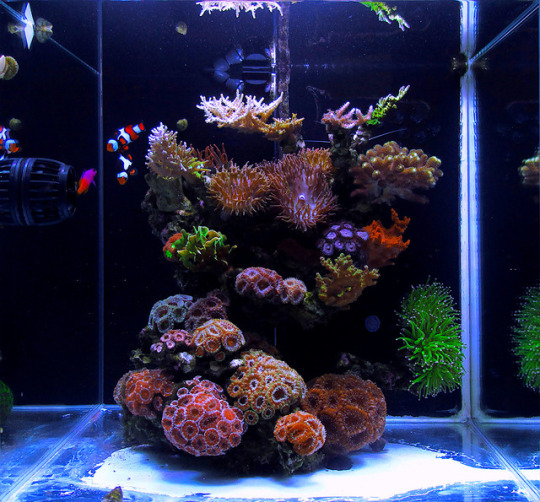
© Mr.Microscope from nano-reef.com
Read more at teruyalab.com
Display: Mr. Aqua 25 gallon Cube, 18" x 18" x 18"
Guts: Homemade sump 15.5" x 16" x 13" (about 8 gallons while functioning, 13 gallon capacity)
Sun: DIY LED's with Typhon Controller
Heart: Sicce Syncra Pro 550GPH Return Pump
Lungs: EcoTech Marine MP-10. I use the shortest Long Pulse Mode at 100%.
Blanket: 150 Watt Heater
Digestion: Live rock, water changes, and nope, no skimmer anymore.
Liver: Two Little Fishies reactor with ROX 8.0 carbon.
Kidneys: BRS 5 Stage RO/DI filter

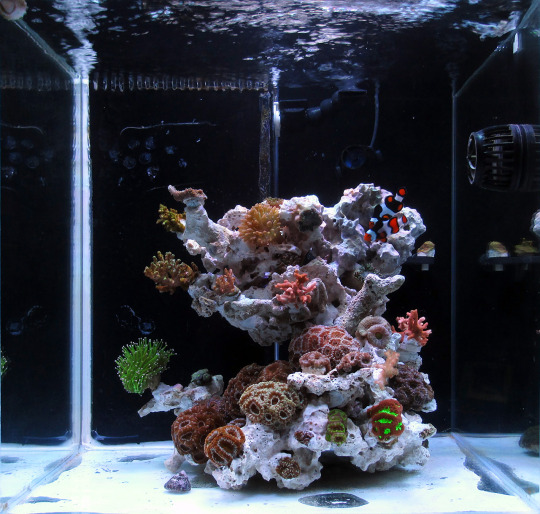
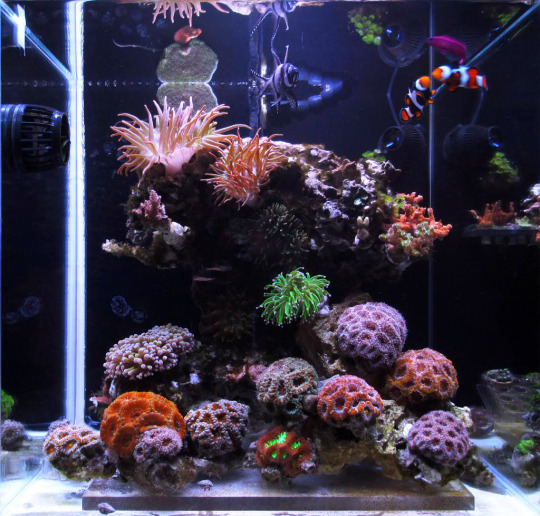
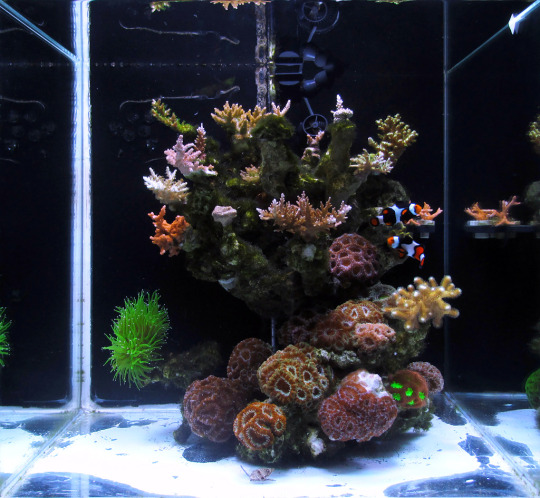
2 notes
·
View notes
Photo

Read more at teruyalab.com
Source: tropica.com
Choose the correct light source for your needs
The lumen, level of brightness, is always written on the packaging. Here, we show you how you can put the information from the packaging on the fluorescent tube or bulb to practical use in the aquarium.
Previously, a light bulb or fluorescent tube lamp was classified by how much electricity it used (Wattage). However, this makes it very difficult to compare different kinds of light sources, because light bulbs, fluorescent tube lamps and LED lighting are not directly comparable on this point. It is advisable instead to find the number on the packaging which tells you how many lumens the light source produces. Lumens refer precisely to how much light a particular light source gives off, rather than how much energy it produces. The value is written on the packaging for all light bulbs, fluorescent tube lamps, LEDs, etc.
To make it simple, we explain here how many lumens we recommend per litre of water in an aquarium for a selection of plants from the Easy, Medium or Advanced category.
(20 lumens corresponding to 0.5 watt T5 tube per litre, 40 lumens corresponding approximately to 1 watt T5/litre.)
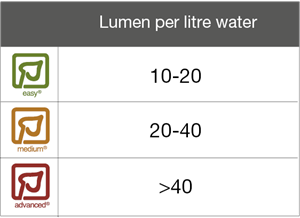
How much light is enough light?
That all depends upon which plants you have chosen for your aquarium. If you have chosen nothing but "Easy" plants, 10-20 lumen (0.25 to 0.5 watts) per litre is adequate. For "Medium" plants, we recommend 20-40 lumen (0.5 to 1 watts) per litre, while "Advanced" plants require more than 40 lumens (1 watt) per litre.
The picture series shows the same aquarium (54 litre starter set) with A) standard T8 tube of 15 Watts, B) T5 tube of 24 Watts, and C) 2 x T5 tubes with 24 Watts per tube, in order to visualize how much more light is given off by using a T5 tube rather than a T8 tube, the same amount as you get from switching from one tube to two tubes.
A simple and cheap way to use the light optimally is by always using a good reflector (read more about reflectors here) as well as by ensuring that the temperature - especially during summer - does not get too high inside the lamp (read more about the amount of light given off and temperature here).
Our recommendations, in lumens/watts per litre, are given based upon many years' experience using T5 fluorescent tube lighting.



0 notes
Photo

© Bruce York
Main Display: 150 US gallon(48”W x 30”H x 24”D)
• Refugium: 20 US gallon Long
• Skimmer: ASM G-3
• Lighting: 250w Radium x2, 54w ATI AB+ x2, Lumen Bright 3 Reflectors, Reeflex Cube magnetic ballasts
• Return Pump: Blue Line 55HD external pump
• Water Circulation: Mag 9.5 on closed loop, Tunze 6065 x2
• Reactors: Kalkwasser, Calcium, Carbon, Ferric Oxide
• Top-off Water: RO/DI

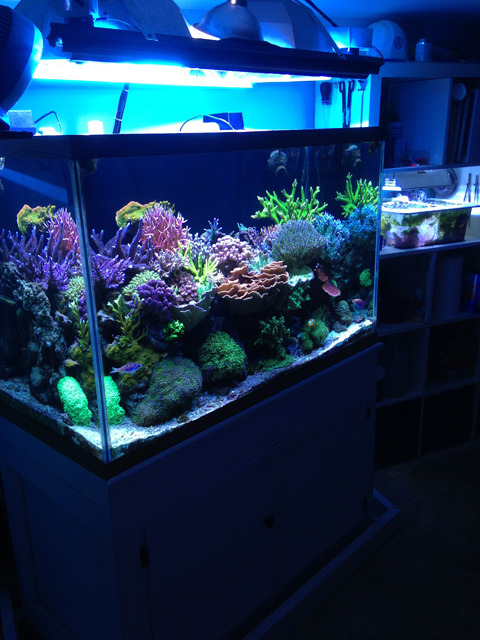


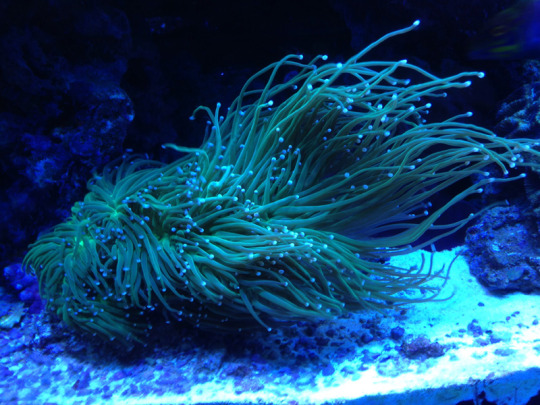


#aquarium#fish tank#saltwater#nano reef#reef tank#marine tank#pico reef#saltwater aquarium#reef aquarium
1 note
·
View note
Photo

Read more at teruyalab.com
Source: practicalfishkeeping.co.uk

Name: Adam Walding.
Age: 27.
Years keeping fish: Five.
Favourite fish: Probably my Alestopetersius brichardi.
Most paid for a fish: The Alestopetersius, at £20 each.
Dream tank: If I had to choose one it’d be a lot like this but bigger and with more Alestiid species.
Adam Walding is an aquarist who has brought a chunk of deepest Africa into his home in Northants. A self confessed fan of the old continent, he’s put together a beast of a tank that goes beyond being just a big volume with big fish. Instead, he’s created a shoal-laden, natural-feeling layout with canopies and undergrowth. This is the forested side of Africa we see all too infrequently in UK circles.
Adam came to my attention after I mislabelled a fish in an earlier magazine. It turns out that while I was scrabbling around photo archives the world over, he had much of what I needed, all sat within an hour’s drive from my office. After I’d been suitably chastised, I asked if he’d be keen on letting me take a closer look at his project.
Flash forward a few weeks, and I’m stood in front of a 180cm/6ft window that takes me directly to the Congo. Adam’s Aqua One Aquience Classic 1800R, at 180 x 60 x 66cm, and holding 600 l/132 gal of water, is not the token small set-up I’d envisaged. Sagging under the weight of a wall of Bolbitis, and with region-correct fish streaking in and out of every crevice, I’m pleasantly surprised to see the alternative African scene is very alive, albeit on a small scale, in the British hobby.
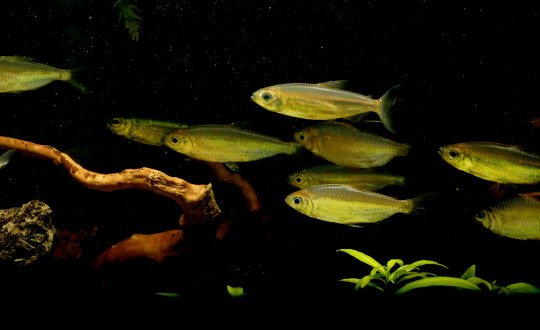
PFK: Adam, for you, what’s the appeal of an African tank?
AW: I wanted to do something different, something a little esoteric. I’d noticed a deficit of African fish in the trade, particularly tetras, and my interest grew from there. I can remember seeing in the tetra sections of fishkeeping books that the Congo tetra was the “exception”, and it got me thinking that it couldn’t have been the only one of its kind from Africa.
PFK: How long has this set-up been running for? And what did you have before this?
AW: This set-up has been running since October 25, 2013. Before that I had a Rio 125 with west African fish, a 15 l/3.3 gal shrimp tank and a Fluval Edge I’d converted to a marine tank, with a clip-on twin T5 light.
PFK: What hardware does it have running on it? What filter media are you using?
AW: Hardware is just the standard for the Aquience, with eight T5 tubes producing a total of 260W of power (rather than four long tubes for whatever reasons), two Aquis 1250R external canister filters and 450W power of heating. I use 50/50 pink and white tubes. It’s not likely to be enough for demanding plants, I did once try Eleocharis parvula but that slowly died.
PFK: What maintenance does the tank need, and how often?
AW: I wring out or change filter floss once a week, clean the rest of the media every couple of months, staggering each filter a week apart so that any bacterial losses are minimised. After decor, the tank holds something closer to 500 l/111 gal so I change 125 l a week, normally 25 l or 50 l every day or other day. I find I can remove more detritus this way.

PFK: What spawning successes have you had so far?
AW: Something did spawn in the aquarium a couple of nights ago, the eggs were minuscule and quickly eaten. I think it may have been the Alestopetersius nigropterus, as there was no sign of a bubble nest.
In terms of deliberate spawning, I have bred a pair of my Microctenopoma ansorgii in a separate 40 l tank that sits neatly in the cupboard of the main aquarium.
PFK: What care did you need to give breeding fish? Did you condition them, or move them or anything?
AW: When I wanted to breed the Microctenopoma I couldn’t find a lot of information online, but I did know it would be similar to Betta in that the male would build a bubble nest and that soft water was required. I introduced the largest female to the tank first, and conditioned her with a lot of frozen food for a week before adding the male, whom she promptly attacked.
Given that he was about three times the size of her, that quickly subsided and I noticed a small bubble nest three days later, and then a larger one with eggs in it five days later. I removed the female immediately and then I removed the male when the eggs started
to hatch.
All of this took place in heavily stained acidic water — next time I will try it in slightly harder water.
PFK: You say that pH is around the mid-six mark, with a KH of 2. How do you keep the water like this? Are you using RO for it?
AW: Yes I am, and I use JBL’s Aquadur to remineralise it before changing some.

PFK: Are your fish all biotope specific? Do they originate from the same region, or is there a bit of creative license involved?
AW: I like to be accurate where possible, but some of these fish only have a small geographical range compared to others. It’s easy with the Xenomystus nigri knifefish and Pantodon buchholzi butterflies because their natural range is huge, but it’s much smaller with the Garra congoensis and Alestopeterius nigropterus. Those two I could perhaps be taking some license with, but my A. nigropterus came from Lukeni river, when according to IUCN they are only found in Lac Mai N’dombe. They may not even be nigropterus!
PFK: You made your own backing for this tank. What did you use to do that? How did it come together, and did it take long?
AW: I made that with two-foot squares of egg crate and expanding foam originally intended for pond use. I added some rocks and wood to it before it all set, and then when it had set I applied a couple of coats of Gorilla Glue and paving sand. It took about a week, as I only had room to make one square at a time before fixing it in the aquarium and starting the next.
PFK: What substrate have you used?
AW: It’s the same paving sand I used for the background, thoroughly washed first, although it wasn’t too dusty. Lafarge was the brand.

PFK: What plant species have you used? How have some of these been fastened on to the decor?
AW: I have various Anubias, I think all are varieties of A. barteri. There’s a lot of Bolbitis in there, some Nymphaea, a Crinum calamistratum and some Hygrophila polysperma — there’s that creative license!
Some of the Anubias were tied down where necessary but I just wedged the Bolbitis in crevices on the background, given there was nothing to really tie it to. That was nearly two years ago and the background is now almost completely hidden.
PFK: What interplay between the fish species have you seen? Are any of them ever hostile towards each other?
AW: The different species ignore each other, but the tetras are happy to shoal together. Sometimes there is some aggression from the knifefish toward the tetras but it’s far from the constant chasing and torn fins that we fishkeepers dread. I think it might be the shininess of the tetras that annoys it when half the lights are off — it never does it when both lights are either fully on or off, so I minimise that time.
PFK: What foods are you using, and how often? Do you have a set routine? What’s the trickiest fish to feed, and why?
AW: I use Tetra Pro colour and Pro algae, and generic bloodworm and brine shrimp, normally flakes in the afternoon or early evening, and frozen food later in the evening. It depends
when I get home from work. When the tetras were smaller I used Hikari micro pellets (and still do for young Microctenopoma) but the larger they got the less interest they showed in them.
Some of the tetras are the fussiest fish, especially the newest ones. The Garra are definitely the greediest, even taking food from the surface. I give the knifefish half a prawn once or twice a week, being careful to drop it right in front of him before one of the Garra grabs it.

PFK: What has been the fastest growing of the fish you’ve added?
AW: The Garra I think, which figures given the way they eat.
PFK: What’s been the biggest surprise you’ve had in setting up this tank?
AW: The Microctenopoma have not been anything like as shy as I was led to believe, even swimming up to a net and pecking it at.
PFK: Are there any fish you want to add but can’t source?
AW: Another Alestiid has caught my eye — Brachypetersius gabonensis. I’d also like to
keep more fish from the Alestopetersius genus and to learn if my A. nigropterus really are what they claim to be.
PFK: Are there any fish you regret adding?
AW: I’ve six Synodontis nigriventris which stay completely hidden apart from feeding time, but they do make sure that any food that lands on the substrate isn’t wasted.
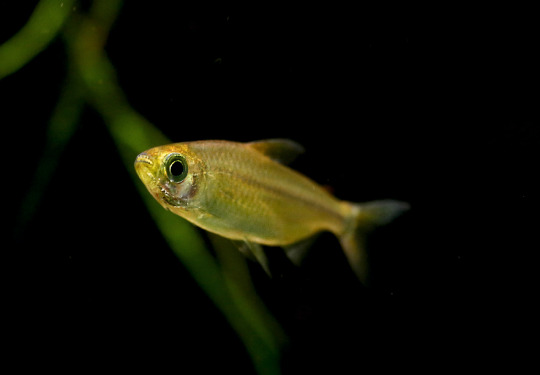
PFK: What should the new fishkeeper be aware of when setting up an African
riverine tank?
AW: I think a good grasp of the nitrogen cycle and some mature media would be a good idea. Touch wood I’ve had no pollution spikes in the tank since it was set up, but these wild
caught fish are very delicate; I’ve had a few die in transport on a journey that was less than an hour. Quarantine is a good idea too, a cheap source of RO water and a willingness to travel if you want rare species. Facebook groups can be good for “I’ve seen such and such here”.
PFK: If you could start again and change anything, what would it be?
AW: I initially had an area of JBL’s Manado substrate for growing the Hygrophila, before realising it’d grow anywhere. There are Malaysian trumpet snails in the tank and for some reason I thought it’d stay put. It didn’t, and despite my efforts there is still some in there, sitting atop the sand mocking me.
Adam's set-up at a glance
The stock in Adam’s tank is made up of...
21 Alestopetersius nigropterus
Nine Alestopetersius brichardi
Nine Microctenopoma ansorgii
Six Synodontis nigriventris
Two Pantodon buchholzi
Two Garra congoensis
One Xenomystus nigri
#aquarium#fish tank#aquascape#freshwater#freshwater aquarium#nature aquarium#planted aquarium#planted tank#aquatic plants#ネイチャーアクアリウム
2 notes
·
View notes